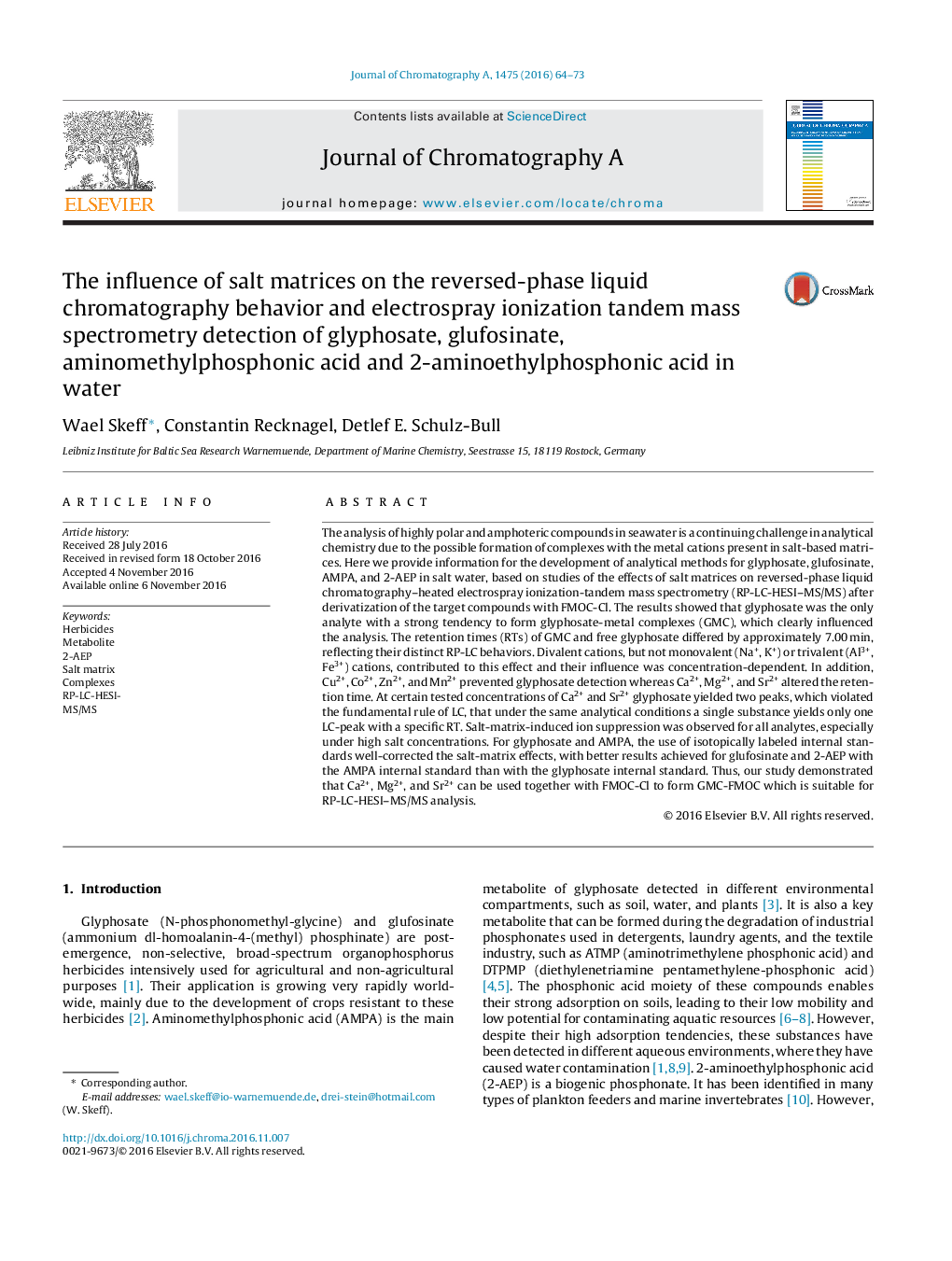| Article ID | Journal | Published Year | Pages | File Type |
|---|---|---|---|---|
| 5136018 | Journal of Chromatography A | 2016 | 10 Pages |
Abstract
The analysis of highly polar and amphoteric compounds in seawater is a continuing challenge in analytical chemistry due to the possible formation of complexes with the metal cations present in salt-based matrices. Here we provide information for the development of analytical methods for glyphosate, glufosinate, AMPA, and 2-AEP in salt water, based on studies of the effects of salt matrices on reversed-phase liquid chromatography-heated electrospray ionization-tandem mass spectrometry (RP-LC-HESI-MS/MS) after derivatization of the target compounds with FMOC-Cl. The results showed that glyphosate was the only analyte with a strong tendency to form glyphosate-metal complexes (GMC), which clearly influenced the analysis. The retention times (RTs) of GMC and free glyphosate differed by approximately 7.00Â min, reflecting their distinct RP-LC behaviors. Divalent cations, but not monovalent (Na+, K+) or trivalent (Al3+, Fe3+) cations, contributed to this effect and their influence was concentration-dependent. In addition, Cu2+, Co2+, Zn2+, and Mn2+ prevented glyphosate detection whereas Ca2+, Mg2+, and Sr2+ altered the retention time. At certain tested concentrations of Ca2+ and Sr2+ glyphosate yielded two peaks, which violated the fundamental rule of LC, that under the same analytical conditions a single substance yields only one LC-peak with a specific RT. Salt-matrix-induced ion suppression was observed for all analytes, especially under high salt concentrations. For glyphosate and AMPA, the use of isotopically labeled internal standards well-corrected the salt-matrix effects, with better results achieved for glufosinate and 2-AEP with the AMPA internal standard than with the glyphosate internal standard. Thus, our study demonstrated that Ca2+, Mg2+, and Sr2+ can be used together with FMOC-Cl to form GMC-FMOC which is suitable for RP-LC-HESI-MS/MS analysis.
Keywords
Related Topics
Physical Sciences and Engineering
Chemistry
Analytical Chemistry
Authors
Wael Skeff, Constantin Recknagel, Detlef E. Schulz-Bull,
